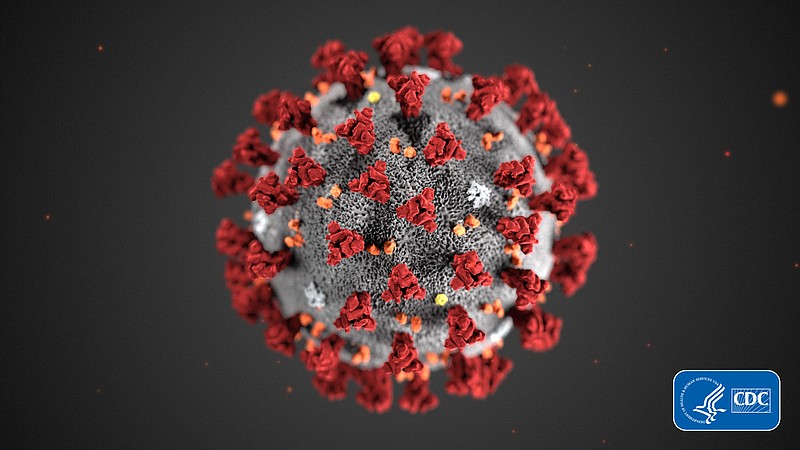Garland County's infection rate fell one-tenth of a percent Wednesday, the first 0.10% decline in more than five months.
The county's PCR and antigen infection curve has fallen 92% since mid-August, but its total infection rate remained at 10.3% until Wednesday. It rose 1.5 points from mid-July to early September. The quick rise and slow fall was a feature of the delta variant that brought the state and county's infection curves to non-winter peaks in mid-August, state officials said Tuesday.
The ascent was steeper than last fall and winter's rise, tracing an almost vertical rise over a six-week period, but the more than two-month descent hasn't been as pronounced as last winter's plunge.
"We're not seeing as rapid a decline as we had seen with the winter surge," Dr. Jose Romero, the state's secretary of health, said Tuesday during the state's weekly press update. "The reason why is COVID is much more transmissible. We are seeing a decline. It's slower. It has to do with the transmissibility of the disease."
The 641 new cases reported statewide Tuesday led to one of the largest increases in the rolling-seven day average during the 11-week decline from mid-August's non-winter peak. The curve fell again Wednesday, dropping 0.004%.
"We've had a steady decline week after week after week," Gov. Asa Hutchinson said Tuesday. "It has been a consistent decline. This is the first uptick. You have to wait and see what tomorrow looks like and to see whether we're flattening out at this level or whether there's going to be a further decline."
Hutchinson said results from at-home, rapid tests aren't reflected in the state's COVID statistics.
"I know that a significant number of people are using the rapid test they can acquire at their local pharmacy," he said. "We don't have a good reporting mechanism on that. Whenever you look at our PCR and antigen test we have reported to us, that's likely to be a small measure of the amount of testing that's going on in the state."
As a service to our readers, The Sentinel-Record publishes updates released by the city of Hot Springs and the state of Arkansas.
The Arkansas Department of Health is no longer reporting confirmed and probable cases separately. The following stats were posted Wednesday on the Health Department's website:
• 514,539 cumulative cases, up 546 from Tuesday.
• 438.86 rolling seven-day average of new cases, down 1.85 from Tuesday.
• 4,102,681 PCR test reports, up 6,200 from Tuesday.
• 9.2% cumulative PCR infection rate, no change from Tuesday.
• 4,496 active cases, up six from Tuesday.
• 1,164 active juvenile cases, up 39 from Tuesday.
• 501,467 recoveries, up 518 from Tuesday.
• 4,176,600 vaccine doses received, up 6,080 from Tuesday.
• 3,165,348 doses given, up 11,400 from Tuesday.
• 331 hospitalizations, up six from Tuesday.
• 88 cases on ventilators, no change from Tuesday.
• 148 ICU patients, up one from Tuesday.
• 8,434 deaths, up 22 from Tuesday.
• 2,256 nursing home deaths, no change from Tuesday.
• 16,010 cumulative cases in Garland County, up six from Tuesday.
• 8.0 rolling seven-day average of new cases, up 0.14 from Tuesday.
• 161,238 PCR and antigen test reports, up 168 from Tuesday.
• 10.2% cumulative PCR infection rate, down from 10.3% Tuesday.
• 81 active cases in Garland County, no change from Tuesday.
• 15,553 recoveries in Garland County, up six from Tuesday.
• 396 deaths, no change from Tuesday.
